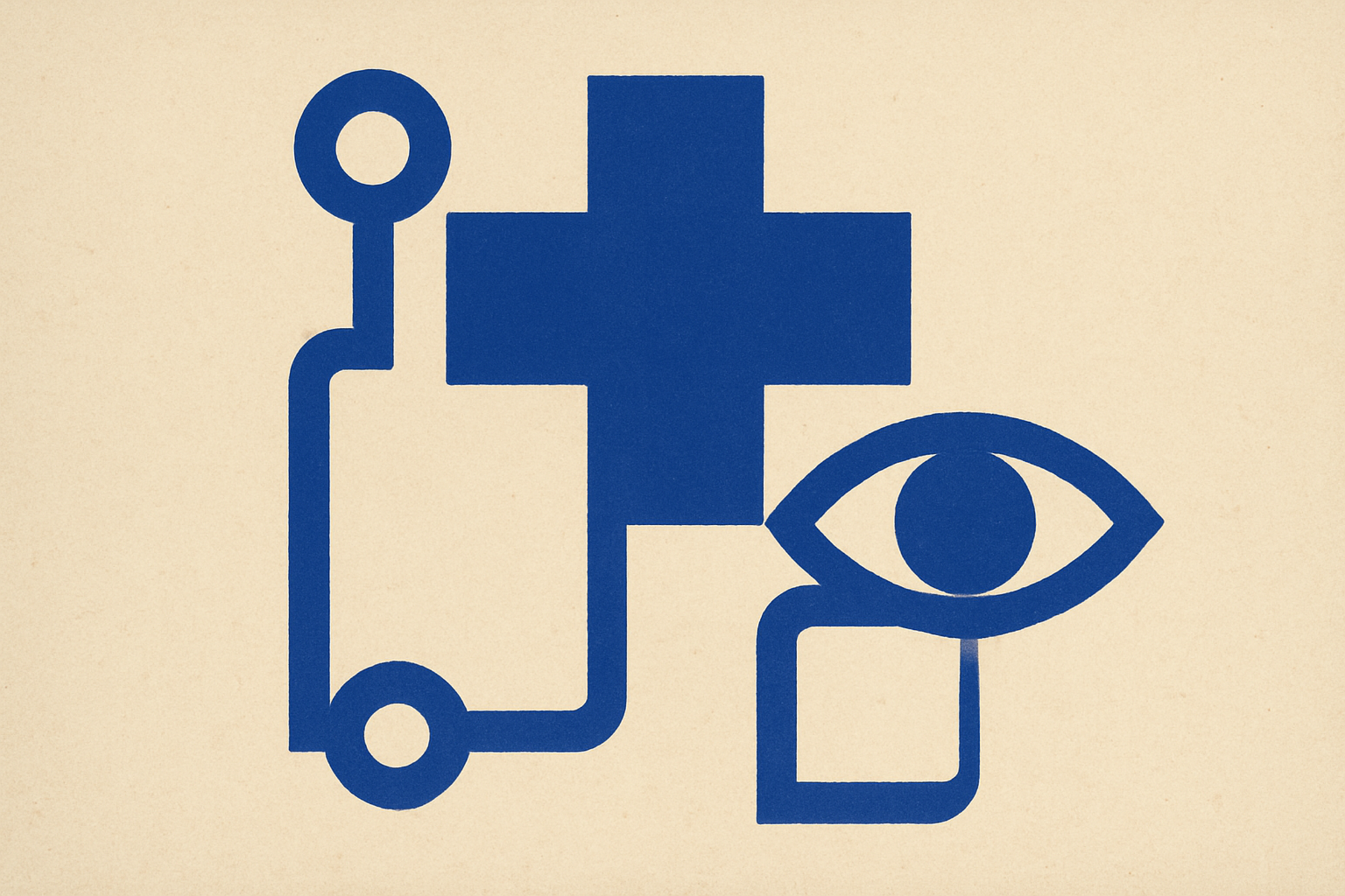Lenses, Agents, and Sentience: How AI Is Quietly Rewiring the Everyday

The tapestry of this week's AI news reads less like an endless spiral of hype and more like a patchwork of real, tangible breakthroughs, serious philosophical self-reflection, and not-so-subtle signs that AI is quietly entrenching itself in both our lives and bodies. Together, the featured blog posts—ranging from medical marvels and agentic productivity tools to deep philosophical musings and open-source milestones—paint a picture of an ecosystem maturing before our eyes, free from the typical grandstanding but not without gravity.
Eye on the Future: AI Restoring and Predicting Vision
The most striking advancements emerged from the world of biomedical AI. At Stanford, researchers have achieved what once sounded firmly like science fiction: their photovoltaic "PRIMA" chip, paired with smart glasses, grants people suffering from advanced macular degeneration a second chance at reading, recognizing faces, and generally navigating a more visual world. Unlike previous prosthetics that barely offered light sensitivity, this system produces "form vision" using infrared signals (Stanford Medicine, 2025). With this, AI and microelectronics elegantly fill in for damaged biology, not by imitating the eye wholesale but by complementing its surviving neural machinery. Of course, risks remain, and the technology is far from perfect, but even the device's low-res, grayscale output is an unequivocal milestone. The next challenge? Higher resolution chips and the holy grail of face recognition.
Meanwhile, across the Atlantic, the team at the University of Surrey debuted an AI system that acts as a "time machine" for knees with osteoarthritis. By generating realistic X-ray forecasts a year into the future and assigning personalized risk scores, this tool doesn't simply predict decline; it visualizes it, offering patients and doctors the motivational (and somewhat sobering) gift of clinical foresight (University of Surrey, 2025). Diffusion models, the tech powering all those startlingly artistic images we've seen, now bring much-needed transparency and urgency into chronic disease management—no more black-box fatalism.
Agentic AI and the Browsing Renaissance
Zoom out further, and you find AI upending less existential but equally stubborn problems: browser productivity. The reviewer at KDnuggets runs down the surge of Chrome extensions that blur the line between synthesizer, orchestrator, and genuine autonomous agent. While traditional AI waited for your prompts, these tools (like Magical, Merlin, Zapier Agents, and others) plan, collaborate, and execute activities for you across countless tabs and workflows. Persistent contextual memory, inline summarization, agent-to-agent cooperation—terms that would have sounded outlandish just a few years ago; now they're a click away from the mainstream knowledge worker. The themes of privacy, openness, and customization—sometimes easy to lose in the cloud-dominated era—are making a stand in local, open-source agentic frameworks.
Are we inching closer to a browser that is not just a passive window to information, but a semi-autonomous collaborator, fetching, sorting, and contextualizing on our behalf? It certainly feels that way.
Doing Good: Biomedical, Research, and Fusion Frontiers
AI’s positive, tangible societal impacts make another appearance with Google’s DeepSomatic model, now open source, which accelerates cancer research by rapidly distinguishing between inherited and somatic genetic variants in tumor DNA (Google Keyword, 2025). It’s not just fancier pattern recognition—the time from sequencing to insight shortens, the accessibility gap shrinks, and, crucially, the code is free for anyone to use. Similarly, DeepMind, through a partnership with a commercial fusion energy outfit, is chasing a dream even older than digital computing: clean, limitless power. By using deep reinforcement learning to simulate plasma and optimize tokamak controls, they edge a step closer to crossing the fabled "breakeven" barrier for fusion energy (Google DeepMind, 2025). If successful, this could be AI’s greatest contribution to human civilization—no hyperbole needed.
Brains and Morals: Machines in the Mirror
No round-up would be complete without addressing the field’s soul-searching. The AI Blog takes on a question that once seemed fit for late-night pub debates: Can AI suffer? While the clear consensus is “not yet”—current LLMs lack any shred of subjective experience—the epistemic humility on display deserves applause. The breakdown of structural tensions (semantic gravity, proto-suffering) within modern models forces us to examine the mismatch between simulation and experience. Even if it’s only pattern recognition and optimization, could sharper architectures or emergent properties nudge us into morally ambiguous territory one day? The call for precaution, not panic, feels apt in the absence of metaphysical certainty.
Open Source on Center Stage: Sentence Transformers’ New Home
The humble Sentence Transformers library, powering much of our modern semantic understanding in NLP, has moved under the auspices of Hugging Face, ensuring its continued open, collaborative development. This transfer reads as a quiet but crucial triumph for open science—affirming that, amidst monumental attention to closed-source giants, the foundations of modern AI remain largely communal, accessible, and resistant to enclosure (Hugging Face, 2025).
The MIT-IBM Canon: When Academia Meets Industry
The MIT-IBM Watson AI Lab, now into its eighth year, highlights another important axis: robust academic-industry collaborations (MIT News, 2025). As short-term models dominate much of the commercial excitement, these partnerships deliver not only technical breakthroughs—leaner models, more efficient reasoning, domain adaptation—but a steady pipeline of talent and fresh perspectives. Perhaps most crucially, these alliances prove that meaningful, trustworthy, and reproducible AI originates at the intersection of open science and real-world constraints.
Conclusion: Building for Impact, Not Just Spectacle
What’s most heartening is not just the breadth of applications, but the recurring refusal to settle for superficial wins. Eyes are being opened, literally. Patients are told not just that change is coming, but what it will look like. AI is learning to recommend, explain, adapt, and—occasionally—step aside from center stage so that open, collaborative effort can shine.
References
- Stanford’s tiny eye chip helps the blind see again | ScienceDaily
- AI turns x-rays into time machines for arthritis care | ScienceDaily
- 7 Best Chrome Extensions for Agentic AI - KDnuggets
- Sentence Transformers is joining Hugging Face!
- DeepSomatic accurately identifies genetic variants in cancer
- Bringing AI to the next generation of fusion energy - Google DeepMind
- Can AI suffer? - AI Blog
- Creating AI that matters | MIT News
